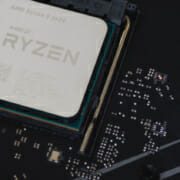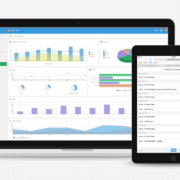How To Choose The Best Tech Stack For Your App
One of the most important choices you can make as a developer is opting for the right tech stack. The right technologies allow you to complete your apps on time and within budget. However, the wrong choices will derail your projects and make you miss milestones. Below, we reveal several of the best tools for developing compelling enterprise apps and when to use them.
1. Understanding The Different Types Of Mobile App Development
Mobile app development is a complex beast that requires foresight. And the reason for this is that both Android and iOS are fundamentally different. Each platform has its own unique Application Programming Interfaces (APIs), development tools, and submission guidelines. Thus, targeting both platforms presents a plethora of challenges to even the most seasoned developers.
So before embarking on a mobile app project, it’s essential to choose the right tech stack for the job. And what a tech stack brings to the table is a suite of tools, which usually consist of a database, back-end and front-end tools, frameworks, and programming languages. In the case of game studios, they’ll often use an off-the-shelf engine, such as Unity or Unreal, that handles cross-platform development.
However, when choosing a tech stack, it’s also critical to understand the different types of apps you can develop:
- Native Apps – These applications offer the best app store distribution, performance, and user experience. Developers will use programming languages and tools that specifically target Android or iOS.
- Cross-Platform Apps – Apps made for Android, iOS, and even the desktop offer reasonably good performance and a user experience. However, these will still lag in terms of speed and performance to their native counterparts.
- Hybrid Apps – These rely on web-based technologies and utilize a native app shell to run on mobile and desktop devices. They make it possible for web developers to target multiple platforms but at a significant integration, performance, and speed penalty.
2. Choosing The Right Tech Stack
Before choosing a development solution, carefully consider whether you’ll be making a native, cross-platform, or hybrid app. Then, take a hard look at your team’s capabilities and available resources.
For example, you may want to develop a native app to provide customers with the best possible user experience. But you don’t have enough team members, or they’re not skilled enough to handle native development for both Android and iOS. Your team may have proficiency in Apple’s Xcode and the Swift programming language but lack experience in Android Studio and Java or Kotlin.
Now, you could seek the services of native development specialists, such as NS804, to bring about the desired result. But if that’s not an option, you could use a cross-platform suite, such as Flutter, React Native, or Xamarin. However, your team’s success with these tools will largely depend on how proficient they are with their respective programming languages, namely: Dart, JavaScript/TypeScript, and C#.
If you’re still uncertain of which cross-platform tech stack to choose, then consider the following aspects. Flutter is a good option for fast development and comes with a wealth of widgets. But it’s still a relatively new tool with limited functionality and libraries. Alternatively, there’s React Native, which offers excellent mobile UI and modern features yet won’t deliver a native-like look or performance.
Then, there’s Xamarin that’s capable of accessing native APIs and providing near-native performance. On the downside, it’s not the most popular cross-platform solution, and since it’s part of Microsoft’s .NET stack, developers must understand its complex framework and runtime.
Finally, there are hybrid app technologies such as Apache Cordova and Ionic Framework. These are the perfect solutions for budget-conscious developers proficient in JavaScript, CSS, and HTML but willing to sacrifice performance and a native-like experience.
3. Using The Right Tools For Making Enterprise Apps
If you’re developing enterprise apps, you’ll need to use tools that are best in class. Quite often, these are the very same tools provided or recommended by the platform holders. In Apple’s case, they want developers to use their Xcode Integrated Development Environment (IDE) for creating apps for all their devices. And in Google’s case, they prefer that developers use Android Studio and associated software development kit (SDK).
Furthermore, Apple’s Swift is a powerful statically typed programming language ideal for modern application development. And since it’s a type-safe language, the result is cleaner and safer code that’s less prone to runtime crashes. Also, Swift handles memory exceptionally well thanks to its Automatic Reference Counting (ARC) memory management. What this means is that it’s an excellent language for developing performant and secure enterprise apps.
And in the Android camp, Google has been encouraging developers to switch over to Kotlin from Java. While Java has been a stalwart programming language in the enterprise space since the mid-90s, it’s verbose with a steep learning curve. Kotlin, on the other hand, offers developers similar features to Java, but it’s easier to learn and allows for both object-oriented and functional programming. With such flexibility and power, developers can release polished enterprise apps far quicker than before.
You’ll likely need a database for your application, and there are several good options available. Both Android and iOS developers can implement the SQLite relational database to manage data. But if you’re seeking a more modern and scalable solution, then consider Realm. What makes Realm so compelling is that it integrates seamlessly with React Native and Xamarin. And if you prefer to work with Google’s tech stack, you may want to take advantage of Firebase.
4. When To Build An MVP
Building complex enterprise apps presents developers with plenty of risks and high development costs. There’s no knowing if it will achieve significant download numbers, engage users, and perform adequately.
So, the only way we’ll know if a project holds promise is if we test the market without investing heavily in a finished product. Instead, we focus our efforts on a minimum viable product (MVP), which includes the bare minimum functionality of the app we envision. Once the MVP gains traction with users, then we can proceed to scale.
5. Consider How Your Tech Stack Affects The Cost Of Development
The type of tech stack you use will affect the cost of development considerably. If you’re embarking on native development, you’ll need to have developers on your team capable of programming for both Android and iOS. Furthermore, you’ll need to maintain two codebases, which will only increase your development costs.
Don’t forget to account for the cost of your development tools. After all, it’s easy to forget about this with so many open-source and free options available nowadays. Many IDEs are available for free and primarily aimed at indie developers, open-source projects, and students.
But if you’re a professional developer or a company, you’ll need to purchase a license, either as a subscription or a one-off cost. Similarly, there are different pricing tiers for other tools, such as automated testing suites, back-end cloud services, and databases.
The Bottom Line
Choosing the right tech stack for your app will allow you to complete it on time and within budget. In an ideal world, you’d opt for tools that facilitate native app development. But if that’s not feasible, consider the alternatives or work with a professional developer. Contact us today to learn how NS804 can help you develop amazing apps with the best-in-class technologies.













Leave a Reply
Want to join the discussion?Feel free to contribute!